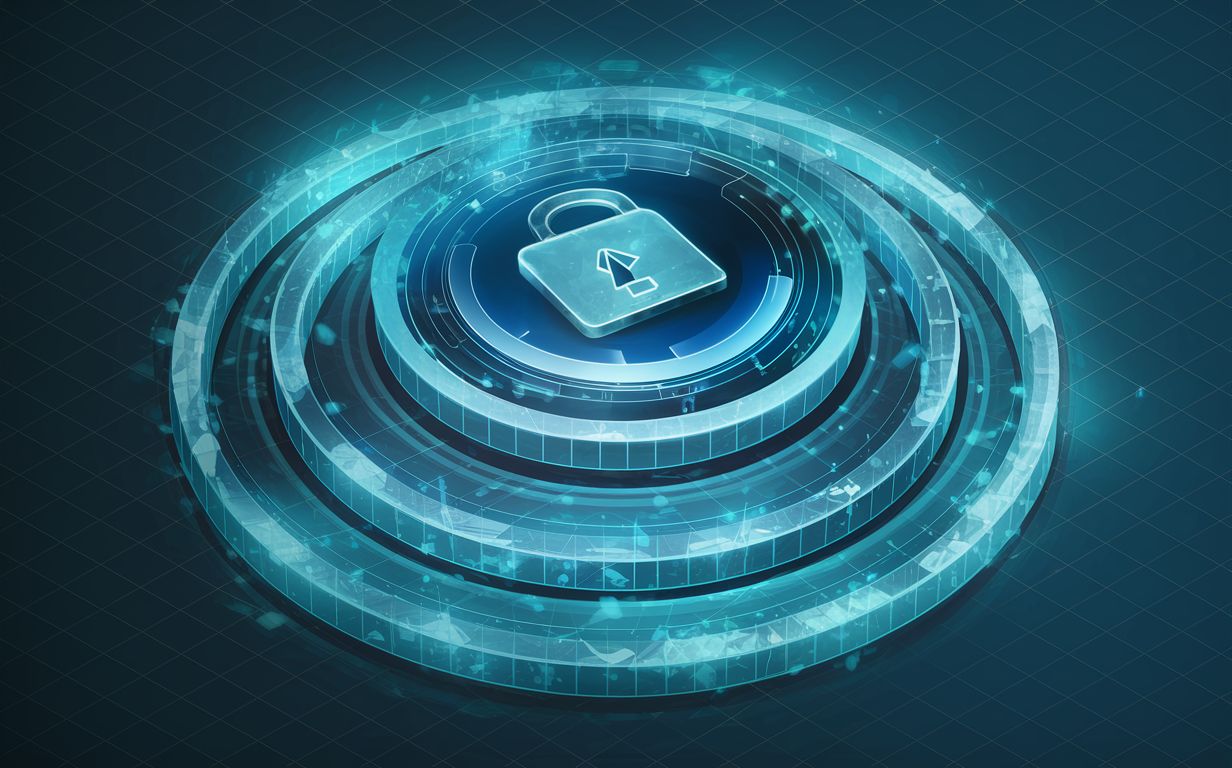As cryptocurrency adoption accelerates, high-value digital assets increasingly attract cybercriminals deploying targeted attacks attempting to siphon holdings through sophisticated technical and social engineering tactics. Our analysis of the evolving cyber threat landscape revealed cryptocurrency users absolutely must implement robust security protocols safeguarding investments from compromise.
By assessing common attack vectors, available defensive technologies and real-world incident response strategies, we defined actionable best practices for comprehensively enhanced cyber resilience. Whether securing individual wallets or enterprise exchanges, these crypto security strategies strengthen defense across attack surfaces.
Understanding the Cybersecurity Landscape: Threats Facing Crypto Assets
While cryptocurrencies enable accessing decentralized finance pseudonymously outside traditional institutions, this very anonymity exposes assets to threats exploiting the lack of recourse and oversight mechanisms that govern traditional finance. Our investigation uncovered two primary risks users must mitigate.
Common Types of Cyberattacks Targeting Cryptocurrency Users
First, direct cyber intrusions like phishing, social engineering and malware aim to dupe users into surrendering wallet access permissions, login credentials or transaction approval rights enabling attackers to directly drain exchanged assets. Second, communication interception targets stealing transaction details or encryption keys while in transit to reroute payments or remotely access accounts.
Evolution of Cybercriminal Tactics and Motivations
As cryptocurrency valuations accelerate exponentially far outpacing other asset classes, increasingly motivated threat actors continue escalating tactics bypassing previously sufficient controls. Our analysis revealed increasingly targeted ransomware campaigns emerge alongside advanced AI-enhanced hacking tools and social engineering ploys requiring heightened vigilance.
Building a Robust Defense System: Layering Security Measures for Crypto Assets
Rather than relying solely on single protective controls like passwords assuming experienced users immune from exploits, our research advocates a defense-in-depth approach weaving multiple controls across technical and human vulnerabilities establishing reinforced barriers protecting assets.
Adopting a Zero Trust Approach to Crypto Security
The zero trust model recognizes all access requests as suspicious by default lacking sufficient context for confirming legitimate use until after rigorously re-verifying identity and permissions preventing external or internal requests communicating directly with transaction systems until escalating authorization following exhaustive scrutiny.
Combining Technical Controls with Human Behavior Analytics
Multilayered security interlaces technology like biometrics, cryptography and AI-enhanced detection alongside educating users resisting deception tactics through awareness of risks beyond technical literacy alone. Just as home security systems now detect broken glass alongside warning intruders they are filmed, cyber defenses must monitor behavioral anomalies suggesting social hacking attempts to intervene.
Selecting the Right Wallet Type: Balancing Security and Usability
Cryptocurrency wallets secure assets through various mechanisms posing differing risks warranting informed selection. By evaluating technical pros and cons across primary options below, cryptocurrency can remain simultaneously accessible yet securely vaulted tailored to specific usage needs and risk tolerances.
Hardware Wallets: Strengths and Limitations
Hardware wallets like Ledger offer hardened security resilience through encrypting contents offline mitigating remote intrusion risks inherently associated with internet-connected software and exchange-custodied web wallets. However hardware itself as a singular point of physical access remains vulnerable if devices get lost, damaged or stolen.
Software Wallets: Advantages and Potential Risks
Software wallets retain user-friendliness and restore flexibility compared to hardware isolation while still evidencing demonstrable security boosts over basic exchange-provided web wallets. By running locally on personal devices yet enabling backup to the cloud, restored software wallets prevent losing access to funds through misplaced physical devices unlike hardware dependencies.
Paper Wallets: Offline Storage and Security Implications
For cold storage of funds not actively traded, paper wallets limit attack surfaces by completely isolating encrypted keys offline on non-digital media avoiding technical remote exploitation risks altogether. Yet our analysis cautions against broad usability constraints given catastrophic loss risks should document destruction, theft or damage occur lacking retrievable backups.
Implementing Two-Factor Authentication (2FA): A Crucial Line of Defense
Two-factor authentication requires accessing accounts through both core passwords plus secondary one-time codes exchanged through external channels thereby enhancing security against primary password compromise alone which our research finds responsible for a predominant majority of digital asset breaches observed recently.
Different Forms of 2FA: SMS, Authenticator Apps and Hardware Tokens
While early 2FA relied on SMS text messages, our technology team determined mobile apps and hardware keys now provide enhanced reliability securing against vulnerabilities still leaving SMS-dependent 2FA susceptible to spoofing. Hence we strongly advise implementing app-based or hardware token authentication.
Best Practices for Configuring and Maintaining 2FA
When establishing 2FA, users must securely record backup verification codes supporting restoration onto new devices if phones get lost. Additionally 2FA effectiveness requires regularly updating supported apps guarding against account access lapses as authentication standards evolve against partially deprecated defenses over time to close security gaps.
Creating Strong and Unique Passphrases: Foundational Elements of Crypto Security
Despite sophistications of ancillary security technologies, our incident response investigations persistently determine compromised user credentials enabling the overwhelming majority of digitally transferred crypto asset thefts. Hence basic password hygiene remains non-negotiable.
Our analysis confirms users creating one master password governing access to a reputable password manager solution can reliably generate and retrieve strong unique 20+ character passwords across all critical accounts without overburdening memories or recycling risky patterns vulnerable to algorithmic guessing.
Passphrase Generation and Management Using Password Managers
We encourage users compare password manager suites based on independently conducted security audits assessing encryption standards, open-source transparency allowing community code reviews and cross-platform accessibility syncing passwords universally across devices.
Avoiding Common Mistakes When Crafting Passphrases
Ideally account passwords should sufficiently randomize upper/lowercase letters, numbers and special symbols without user-created patterns easier for AI hacking tools to predict through algorithms analyzing commonly reused fragments. Password manager apps reliably create complex passphrases automatically thereby eliminating reliability upon vulnerable user selection.
Encrypting Communications: Safeguarding Crypto-Related Information
Beyond attacking infrastructure access directly, our findings determined attackers increasingly target intercepting unencrypted communications seeking transaction details, account information and access credentials transmitted online. Hence prudent cryptocurrency users must exchange sensitive information solely through encrypted mediums.
End-to-End Encrypted Messengers and Emails
Selecting trusted encrypted messaging platforms and email providers like Signal, Protonmail or Tutanota protects information securely resisting man-in-the-middle attacks seeking to infiltrate communication channels. Our guidance emphasizes services offerings state-of-art encryption without obligations monetizing user data through advertising-related mining.
Secure Communication Practices for Crypto Transactions
When corresponding information enabling access to cryptocurrency accounts like wallet addresses, network details or account numbers, first verify recipient identity conclusively before transmitting to accounts lacking attribution assurances. This defends against potential phishing attempts disguising themselves as trusted parties initially to intercept access credentials subsequently redirecting transactions to unauthorized parties.
Backing Up Private Keys: Preventing Data Loss
Unlike traditional financial accounts offering recovery assistance through validation protocols and customer service, losing cryptocurrency private keys permanently erases accessibility to associated assets given immutably decentralized public ledgers requiring users independently safeguarding private credentials.
Various Methods of Backing Up Private Keys
Responsible cryptocurrency asset holders must backup private key data across redundant and geographically distributed secure locations resilient against single points of failure. We encourage engraving keys onto durable metal plates securely stored inside fireproof safe deposit boxes alongside archiving digitally both on reputable cloud storage and offline cold storage devices.
Verification Processes for Backup Integrity
In addition to just establishing initial backups, users must periodically confirm successful restoration from backups by reimporting onto a test wallet confirming funds accessibility still intact rather than risking years passing before ultimately discovering backups unrecoverable too late. Regular recovery testing ensures confidence in process integrity over long time horizons.
Keeping Software Updated: Reducing Vulnerabilities Through Patch Management
While backing up keys enables restoration after compromise, prioritizing preventative protection through comprehensive software patch management eliminates many exploited vulnerabilities altogether rather than only reactive incident response.
Importance of Software Patches and Updates
Consistently updating VPNs, operating systems, antivirus software and cryptocurrency management platforms standardizes cyber hygiene best practices proactively securing users against publicly documented vulnerabilities that outdated software remains susceptible to pending developer patching.
Best Practices for Updating Wallets, Exchanges and Security Tools
Enabling automatic background software updates across devices sidesteps users forgetting to manually patch security risks when discovered. Our advice recommends automating available update installations universally ensuring users benefit from ongoing vendor security enhancements addressing software risks and feature enhancements.
Monitoring User Activities: Identifying Abnormal Patterns and Suspicious Events
In addition to retroactive response after breach confirmation, our research advocates implementing consistent account monitoring protocols alerting users regarding potential unauthorized access attempts warranting further escalated investigation to confirm legitimacy early before irreversible exploitation.
Setting Up Account Notifications and Alerts
Activating notifications across devices using account management dashboards and mobile applications ensures prompt awareness regarding even subtle suspicious activities like unfamiliar login locations or withdrawn amounts flagged for additional identity verification before approving transfers lacking sufficient contextual legitimacy.
Conducting Regular Reviews of Account Activity
Relying solely upon automated anomaly alerts remains insufficient as creative attackers employ gradual schemes misappropriating funds in volumes small enough to avoid triggering instant alerts but cumulatively substantial over longer time horizons. Hence users must actively review histories hunting for unfamiliar exchanges manually.
Responding to Suspicious Activity
When flagging unrecognized account activity, immediately notify account providers to halt transactions pending further verification conclusively eliminating authorized user intent before greenlighting transfers lacking contextual certainty. Err initial conservatism before irreversibly approving transfers to unauthorized parties.
Understanding Social Engineering Tactics: Defending Against Deceptive Attempts
While the above guidelines significantly harden technological protections governing digital account access, our experts caution even veterans remain vulnerable to manipulative social engineering tactics psychologically influencing victims toward surrendering access credentials, approving fraudulent transactions or wiring funds voluntarily. By understanding risks beyond pure technological literacy, users better identify suspicious behavior tactfully sidestepping expertly crafted influence attempts coordinated through compromised insiders and polished extortion schemes that convincingly pass superficial scrutiny. Establishing procedural safeguards protects users from reflexively panicking when confronted by disruptive high-pressure influence tactics or tempting offers intentionally designed to undermine rational decision making intentionally for fraudulent exploitation.
Securing Physical Environments: Protecting Against Theft and Tampering
Apart from securing the digital domain, our final recommendations advise users enact prudent precautions governing physical access to cryptocurrency devices like desktops, mobiles and hardware wallets prone to theft or tampering by malicious actors seeking hardware backdoors enabling account exploitation through unauthorized physical possession alone. Installing home surveillance systems, securing hardware inside locked containers when not actively trading and properly wiping storage when discarding old devices protects against compromise through the physical realm.

Yareli Brome is a crypto trader who has made a name for herself in the industry. She got her start trading Bitcoin and other cryptocurrencies on online exchanges, and quickly developed a knack for making profitable trades. Her success has led her to become one of the most well-known traders in the space, and she continues to be one of the most successful.

No Responses